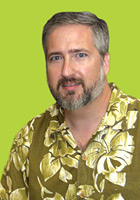Commentary: Lee Sawyer
 |
|
Photo: Estava Garcia, Louisiana Tech |
Katrina aftermath challenges research institutions
The history of Louisiana is closely intertwined with tragedies. My father, who turns 90 this fall, vividly remembers the Great Flood of 1927. "You could take a boat from Monroe, Louisiana, to Jackson, Mississippi," he says, a trip of over 120 miles.
Less than eighty years later, in fall 2005, the combined fury of hurricanes Katrina and Rita produced the worst natural disaster ever to strike the United States. New Orleans, one of our most unique and most beautiful cities, was emptied. Many other towns along the coast, where the Cajun and Creole cultures have endured for centuries, were wiped off the map.
In the wake of Katrina and Rita, at least 17 college and university campuses were closed, displacing around 80,000 students in Louisiana. At the K-12 level, nearly a quarter of a million students were without schools, a result of damaged school buildings. Among the universities affected was Xavier University in New Orleans, which graduates the largest number of African-American physics baccalaureates in the nation. Two research universities in New Orleans, Tulane University and the University of New Orleans (UNO), were hit hard as well.
Louisiana Tech University, where I teach and do research in particle physics, is located in Ruston, 300 miles northwest of New Orleans, far enough inland to spare it from the worst. Even here, the hurricanes disrupted life and delayed the start of classes until September 12.
One of my physics major students, who had gone home to New Orleans for the summer, called me from an evacuee center in Houston. When he called, he just wanted to talk about carbon nanotubes, not the two days he and his mother had spent on an on-ramp of Interstate I-10, waiting to be evacuated. He was able to get a flight from Houston, and he stayed with me until he could move into a dormitory.
While Louisiana Tech students had a university they could return to, students at universities in New Orleans were less fortunate. They were desperate to find a new academic institution as quickly as possible, despite having no transcripts or other records. Helping as much as possible, campuses throughout the state, and beyond, allowed these students to register, basically accepting a student's word about which classes were needed and whether prerequisites were fulfilled.
Louisiana State University in Baton Rouge, about 90 miles from New Orleans, accepted nearly 3500 displaced students; Louisiana Tech University welcomed several hundred students. A physics major from UNO stayed with me throughout the fall quarter; he had arrived with only the clothes on his back.
Louisiana Tech also helped displaced families. The university reopened a dormitory that had been scheduled for demolition and made it available to both displaced students and their families. Three hot meals a day were provided at no cost to the occupants, as well as clothes, linens, and other necessities. Some displaced families stayed until January 2006. Land belonging to the university was made available for a "FEMA Village" of trailers. We hosted the Tulane football team and coaching staff.
The hurricanes seriously damaged the region's research infrastructure: labs and equipment were damaged; biological and chemical samples were destroyed; MRI magnets quenched; computers were flooded; papers were lost. The list goes on and on. Facing this desperate situation, graduate students and postdocs permanently abandoned their projects. The life's work of many researchers was lost; some faculty members who had evacu-ated simply did not return to their universities.
While funding agencies have been extremely helpful to researchers, the lost infrastructure will take years to rebuild. According to one estimate, the storms affected 54 percent of Louisiana researchers who are eligible for National Science Foundation funding.
Louisiana is making progress, however, with its research infrastructure. The LIGO observatory in Livingston and the NASA-Michoud assembly plant in New Orleans quickly resumed operations. Louisiana Tech took deliver of its new supercomputer last fall. Within a year, the Louisiana Optical Network Initiative grid will become the nation's largest university computing facility: computing power of 100 teraflops, connected by 40-gigabits-per-second optical fiber bundles.
Natural disasters have tested the resilience of Louisianans repeatedly. This is, after all, the home of a drink called a Hurricane (known for knocking over the uninitiated). Now the resilience of Louisiana's research infrastructure is being tested as well.
Lee Sawyer is associate professor of physics and physics program chair at Louisiana Tech University. He works on the DZero experiment at Fermilab and on R&D for the proposed International Linear Collider.
Click here to download the pdf version of this article.


